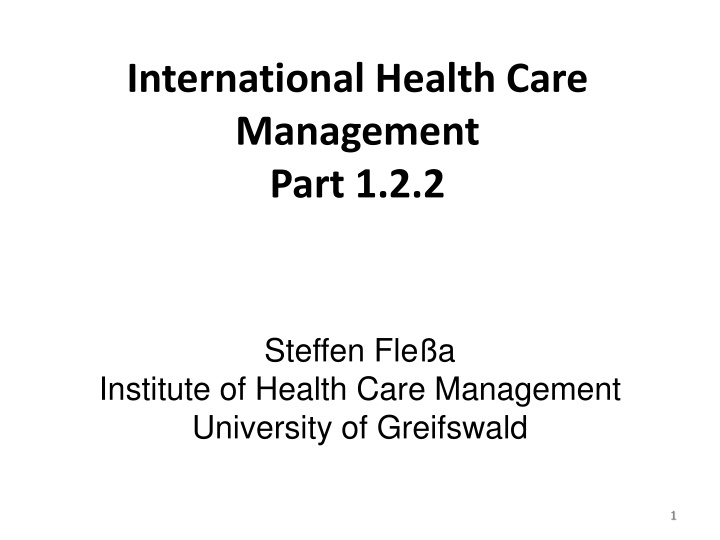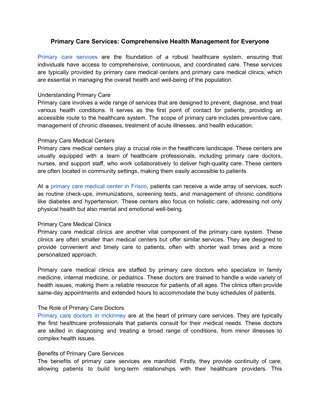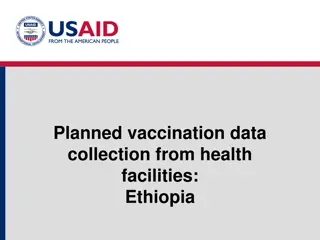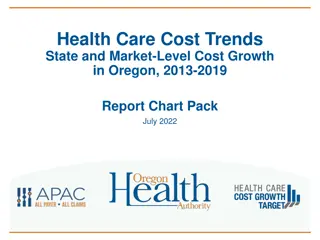Overview of International Health Care Management and Development Concepts
This presentation delves into the realms of health care management, development concepts, and indicators such as per capita income, Gini coefficient, and human assets index. Explore how different countries are classified based on their level of development and understand the criteria for the least developed countries.
Download Presentation

Please find below an Image/Link to download the presentation.
The content on the website is provided AS IS for your information and personal use only. It may not be sold, licensed, or shared on other websites without obtaining consent from the author.If you encounter any issues during the download, it is possible that the publisher has removed the file from their server.
You are allowed to download the files provided on this website for personal or commercial use, subject to the condition that they are used lawfully. All files are the property of their respective owners.
The content on the website is provided AS IS for your information and personal use only. It may not be sold, licensed, or shared on other websites without obtaining consent from the author.
E N D
Presentation Transcript
International Health Care Management Part 1.2.2 Steffen Fle a Institute of Health Care Management University of Greifswald 1
1.2 Health and Development 1 International Public Health 1.1 Background 1.2 Health and Development 1.2.1 Context 1.2.2 Static Concept of Development 1.2.3 Dynamic Concept of Development 1.2.4 Health Care in Developing Countries 1.3 Conceptions 2
1.2.2 Static Concept of Development Static Concept of Development Level of development based on specific indicators Dynamic Concept of Development Process of development 3
Indicators of the Static Concept of Development Per Capita Income Gini Coefficient for Income Distribution Illiteracy Epidemiological Indicators (child mortality, infant mortality, maternal mortality, life expectancy) 100 90 80 70 Income [%] 60 50 40 30 20 10 0 90 4 0 10 20 30 40 50 60 70 80 100 Population [%]
Gross National Product per capita [US$] https://commons.wikimedia.org/w/index.php?curid=47590281 5
Gini-Index (2014) https://commons.wikimedia.org/w/index.php?curid=33962866 6
Country Categories Traditional Classification - Developed Countries - Underdeveloped Countries Classification according to GNP per capita - Developed Countries - Less Developed Countries (LDC) - Least Developed Countries (LLDC) 7
Least Developed Country: Definition Income: the annual per capita income does not exceed $905 in a three-year rolling average Economic Vulnerability Index (EVI): describes the vulnerability of a society primarily originating from the dependency on one source of income, i.e. proceeds from export, share of agricultural production, processing industry and services in the gross domestic product Human Assets Index (HAI): the HAI provides information on the human capital, i.e. food security, malnutrition, child mortality, school enrollment rate, ability to read in adults 8
Least Developed Countries 2016 Source: https://commons.wikimedia.org/wiki/File:Least_Developed_Countries_map.svg 9
Other Classifications Classification according to proportion of market relations: first, second and third world Classification according to the Human Development Index Low-Income Countries Middle-Income Countries Severely Indebted Low-Income Countries Severely Indebted Middle-Income Countries Most seriously affected countries (MSAC) 10
High, low and middle income countries 11 Source: The World Bank 2014
Annual Loss of Quality of Life per 1000 Inhabitants developed market economies (DME) former socialist countries (FS) South America (SA) Middle East (ME), Rest of Asia (AR), excluding India 600 Loss of DALYs per 1000 inhabitants 500 400 300 200 100 0 Africa India AR ME SA China FS DME Source: Worldbank 1993, S. 3 12
Burden of Disease 2007 (WHO 2008) 600 Burden of Disease [DALYS p. 1000 Inhabitantsp.a.] 500 400 300 200 100 0 High Income Africa America Eastern Mediterranean Europe Southeast Asia Western Pacific Group I: Communicable diseases, maternal diseases, perinatal complications Group II: non-communicable diseases Group III: Accidents 13
1.2 Health and Development 1 International Public Health 1.1 Background 1.2 Health and Development 1.2.1 Context 1.2.2 Static Concept of Development 1.2.3 Dynamic Concept of Development 1.2.4 Health Care in Developing Countries 1.3 Conceptions 14























